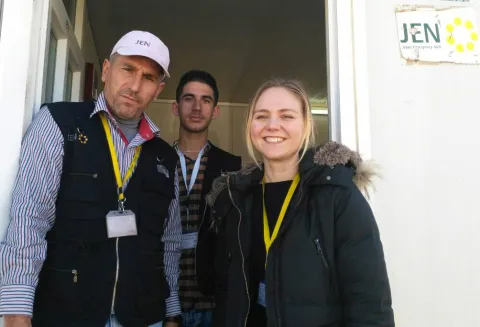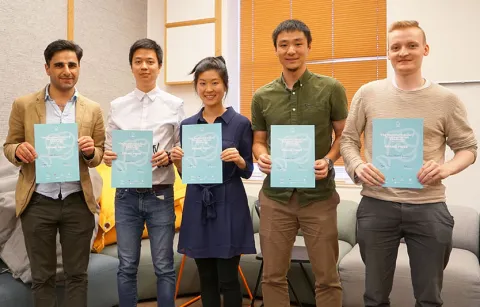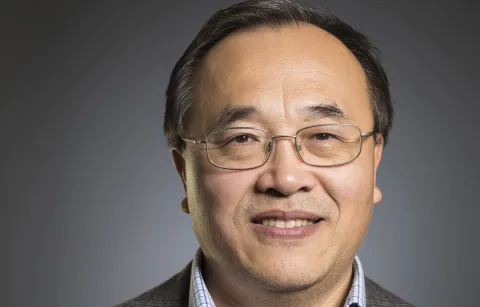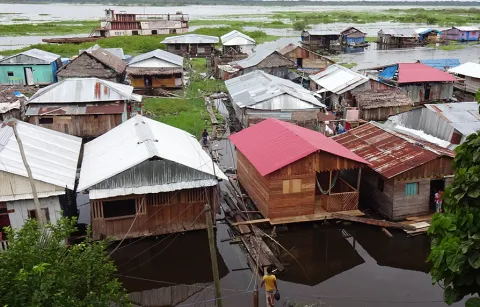Graduate students play an important role in contributing to research projects that have real-world impact. From investigating legacy arsenic in lakes to furthering wastewater treatment innovations to developing landslide risk maps, students in CEE’s Ph.D. program and research-intensive master’s program track have a big impact. In addition to conducting research in collaboration with their faculty adviser, graduate students work with colleagues at partner universities and various agencies and organizations both within the U.S. and abroad.
What types of projects do graduate students work on?
Wastewater treatment innovation
Research area: Environmental Engineering
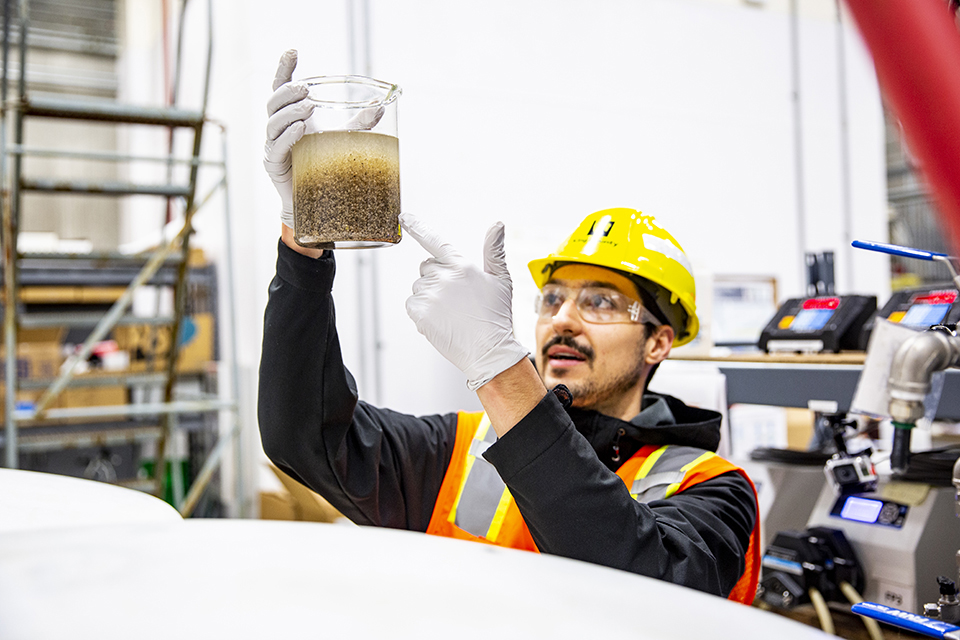
At West Point Treatment Plant, graduate student Maxwell Armenta observes the fast-settling properties of granular sludge, which is capable of removing nitrogen from wastewater.
Although treated wastewater is full of nutrients, some of these can be harmful to the ecosystem in excess amounts. That’s precisely why graduate student Maxwell Armenta (MSCE ’19) visited Seattle’s West Point Treatment Plant twice per week for two years during his graduate studies. From taking samples to monitoring equipment, Armenta helped to further an innovative new wastewater treatment system that researchers believe will improve surface water quality through nutrient removal at a lower cost than other options.
Learn more - Wastewater treatment innovation
Light rail on a floating bridge
Research area: Structural Engineering & Mechanics
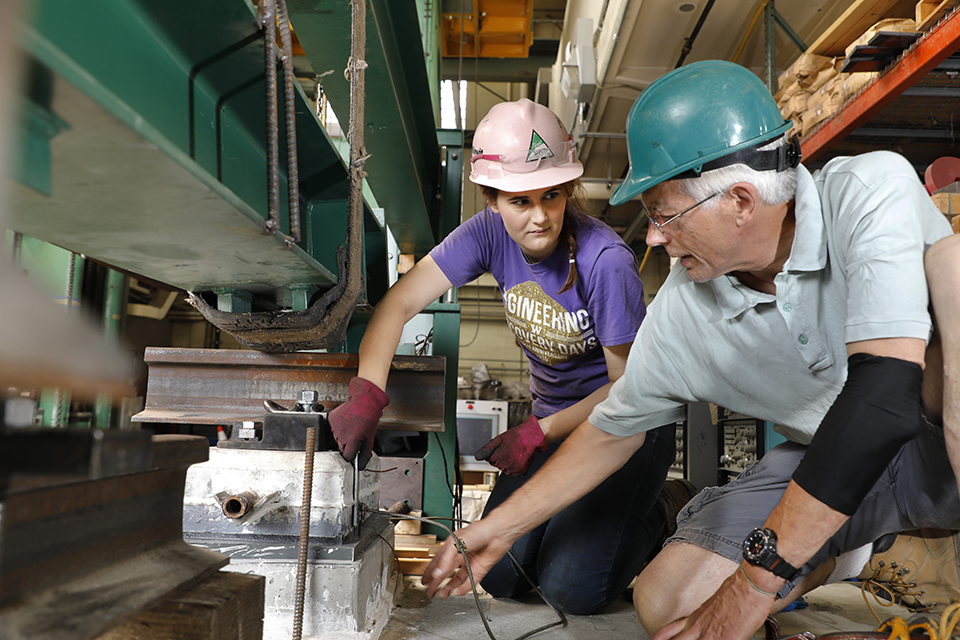
CEE graduate student Kristina Tsvetanova (MSCE ’17) and professor John Stanton discuss an appropriate location for a potentiometer that will record data during testing of a prototype designed to secure rails to the I-90 bridge deck without the use of bolts.
Light rail will cross a floating bridge for the first time in the world in 2023, when the Sound Transit East Link Extension Project is completed. CEE graduate student Kristina Tsvetanova (MSCE ’17) will have played a small part in the engineering feat through her work leading a team of researchers who tested various prototypes. The researchers worked on one of two big engineering challenges associated with connecting light rail to a floating bridge: attaching rails without bolts.
Learn more - Light rail on a floating bridge
Investigating legacy arsenic contamination
Research area: Hydrology & Hydrodynamics
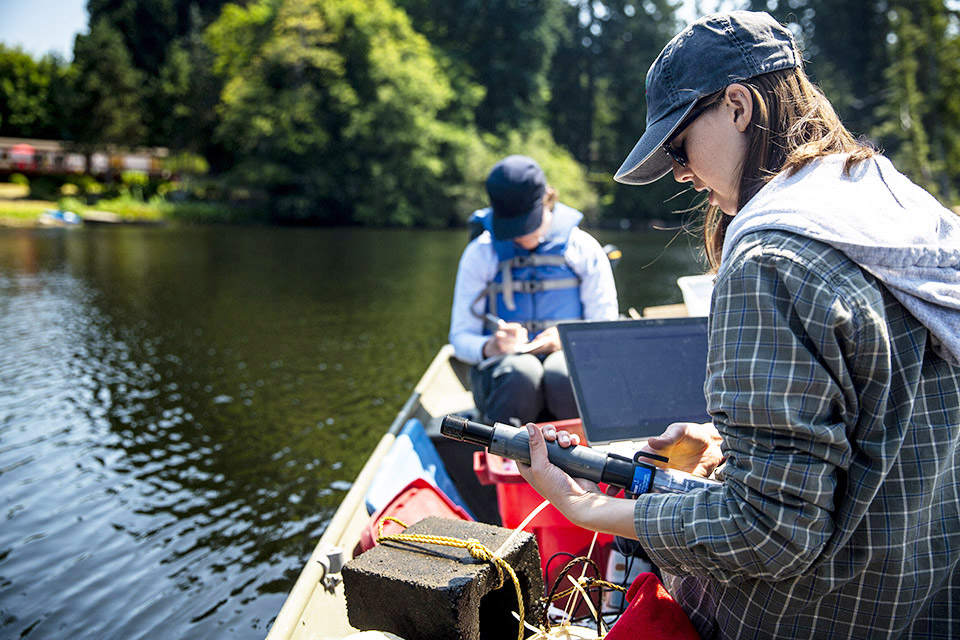
At Lake Killarney, graduate student Samantha Fung offloads data from a dissolved oxygen probe to a field computer for future analysis.
Several times per month, graduate student Samantha Fung heads to Lake Killarney, a shallow lake surrounded by greenery and lakeside homes in Federal Way, Wash. Unlike many who frequent the lake, she isn’t there for recreation. Fung is there to learn more about a surprising discovery: some shallow lakes have unique characteristics that facilitate the movement of arsenic from lakebed sediment up into the food web. The researchers hope to improve future arsenic water-quality guidelines, as well as help prioritize which lakes are in urgent need of remediation.
Learn more - Investigating legacy arsenic contamination
Developing landslide risk maps
Research area: Geotechnical Engineering
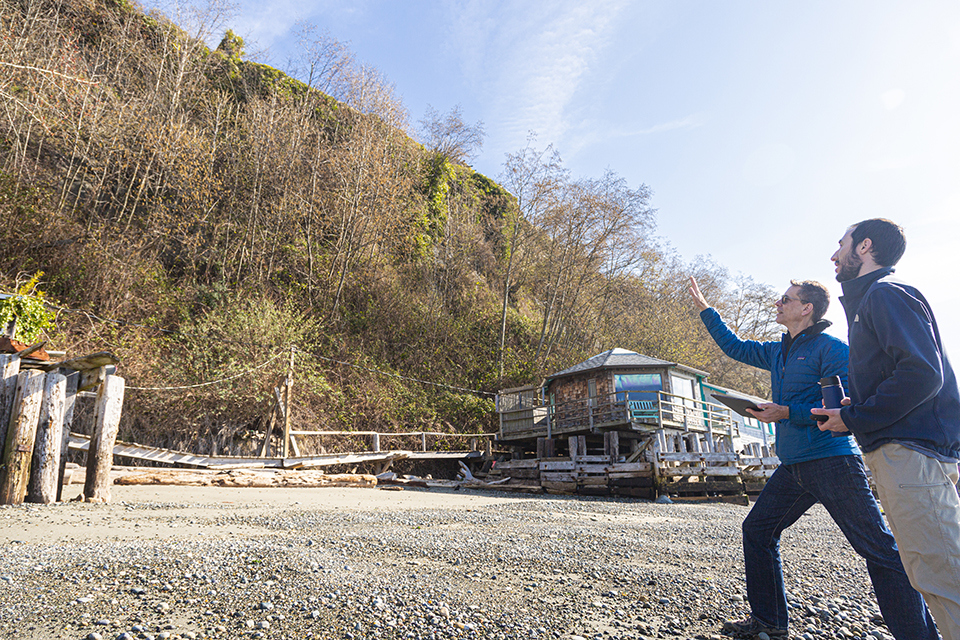
Graduate student William Pollock, right, assesses landslide zones in the Magnolia neighborhood of Seattle.
When it comes to safeguarding Seattle from landslide hazards, graduate student William Pollock (Ph.D. ’20) had a plan mapped out – quite literally. He developed a first-of-its-kind map that predicts landslide risk throughout the city. Since existing landslide maps for the city of Seattle only identify the location of landslide-prone areas, the risk map that Pollock developed with his faculty adviser will be more meaningful to stakeholders and communities, as it estimates the monetary impact of damage and the potential for loss of life.
Learn more - Developing landslide risk maps
Unpacking traffic congestion
Research area: Transportation Engineering
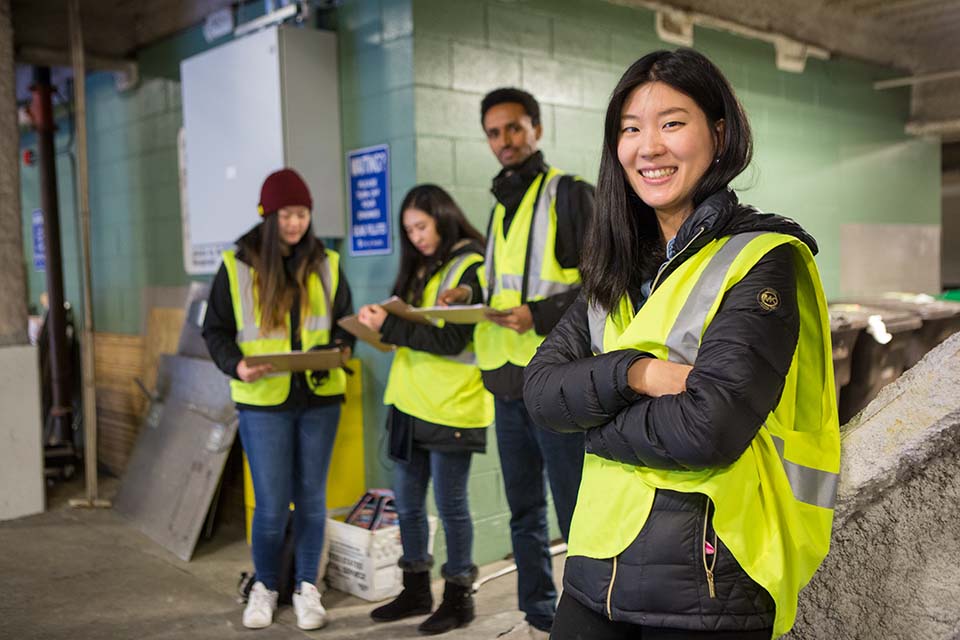
At Seattle Municipal Tower, graduate student Haena Kim gathers delivery data with a team of researchers.
To address the complicated last leg of urban deliveries, when a delivery driver must locate both parking and customers, graduate student Haena Kim led a pilot study at Seattle Municipal Tower to implement a smart locker system that created delivery density by accommodating packages from all retailers. The researchers’ objective was to lower the number of failed delivery attempts, which is when a delivery driver can’t locate a customer, and to reduce the amount of time trucks are parked, which helps alleviate traffic congestion.
Learn more - Unpacking traffic congestion
Creating seismically resilient, sustainable buildings
Research area: Structural Engineering & Mechanics
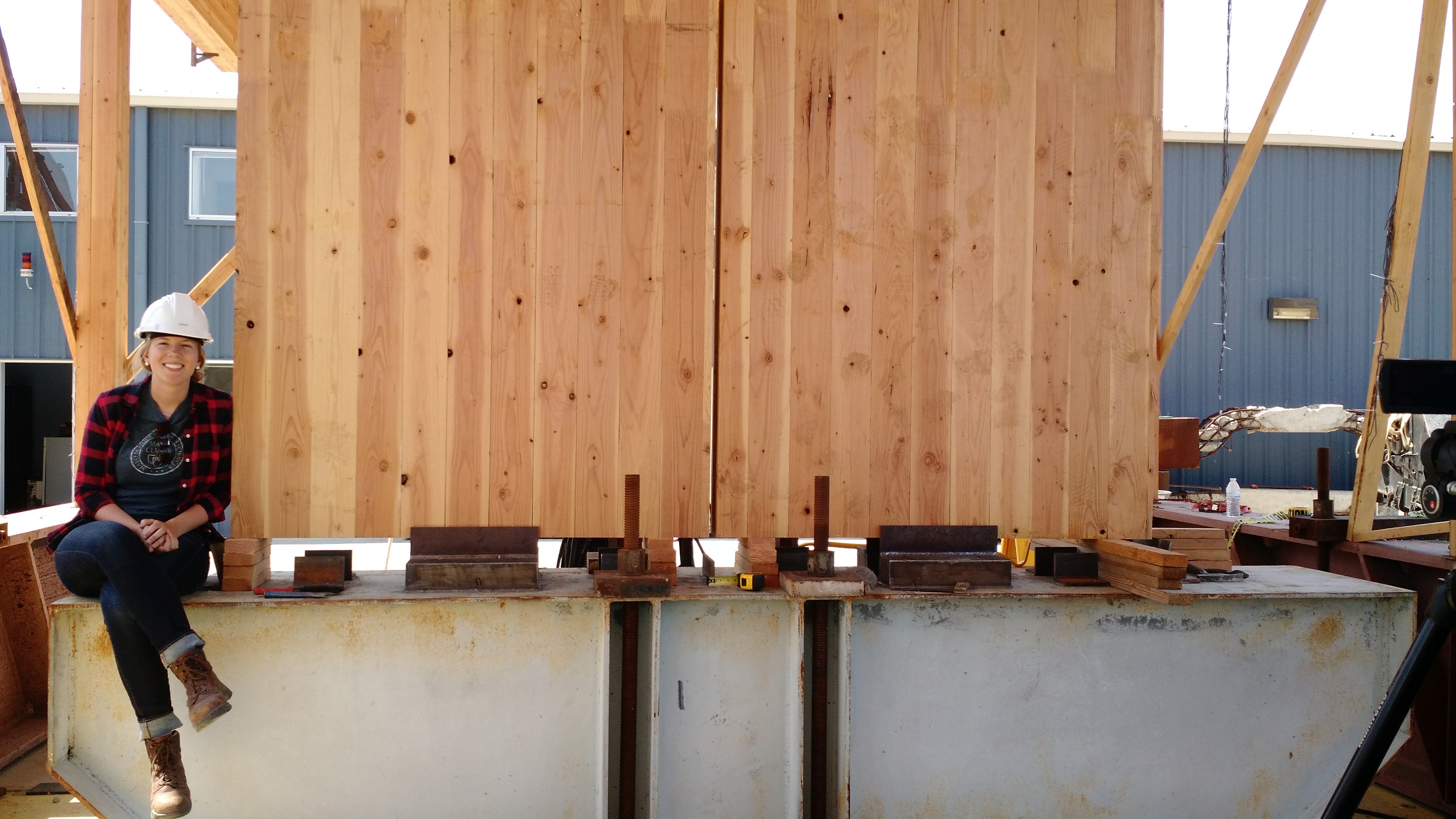
While preparing for earthquake simulator testing of a new structural system, graduate student Sarah Wichman helps oversee the installation of rocking wall systems.
To inform the next generation of buildings constructed in earthquake zones, graduate student Sarah Wichman conducted research to prove that high-rises crafted from a new type of sustainable timber, paired with a rocking wall system, are seismically resilient. In collaboration with researchers across the country, Wichman was involved in testing a two-story structure, which underwent 14 earthquake simulations with no significant damage at the University of California San Diego’s Natural Hazards Engineering Research Infrastructure Center.
Learn more - Creating seismically resilient, sustainable buildings
